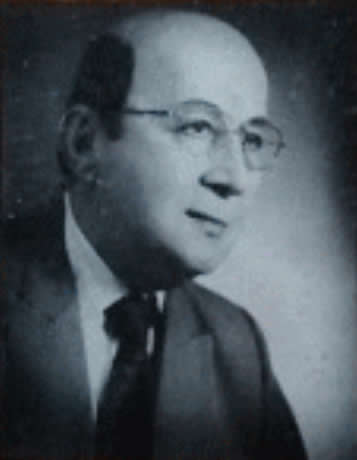Gonzalo Espinel Cedeño (Guayaquil, September 1, 1937 – Unknown) is an esteemed Ecuadorian poet known for his mastery of the sonnet form. Raised in a literary environment alongside his sister, Ileana Espinel Cedeño, he was influenced by the creative circle of poets from the Club 7. Despite early hardships, including the loss of his mother, Gonzalo developed a love for poetry and published several significant collections, including Estatura de la yerba (1968), Arenas al Viento (1968), Láminas del agua (1978), and Vertiente honda (1983). His works, celebrated for their lyricism, introspection, and emotional depth, earned him numerous accolades, including the First Prize in the Ismael Pérez Pazmiño Contest in 1968.
Early Life and Influences
Gonzalo Espinel Cedeño was born into a humble family on September 1, 1937, in Guayaquil, Ecuador. His father, Jorge Espinel Barreiro, originally from Rocafuerte, married Adriana Cedeño Chica, who tragically passed away while giving birth to their first daughter. Later, Jorge married his sister-in-law, Bertha Cedeño Chica, and together they raised Gonzalo. Growing up, Espinel faced the early loss of his mother at the tender age of eight. This experience shaped his character, making him a timid and introspective child.
In his formative years, Gonzalo Espinel found solace in literature and developed a love for poetry. He learned to read with Professor Triviño at the old San José School, located behind the Cathedral. Despite his challenging circumstances, Espinel’s passion for poetry flourished within the literary atmosphere of his home. His sister, Ileana Espinel, a member of the Club 7, attracted numerous young poets who gathered to discuss literature and share their creations. Inspired by this creative environment, Gonzalo Espinel began writing sonnets, honing his skills and finding his unique poetic voice.
Poetic Style and Contributions
Gonzalo Espinel Cedeño’s poetic style was characterized by a delicate fusion of lyricism, introspection, and profound emotion. He exhibited a remarkable command of the sonnet form, showcasing his mastery of this traditional poetic structure. His sonnets were marked by their impeccable construction, evocative imagery, and heartfelt exploration of themes such as love, loss, and the human condition.
Espinel’s poetic works reflected a deep sensitivity to the human experience and a longing for harmony and beauty. His poems often conveyed a sense of melancholy, reflecting the struggles and hardships he encountered throughout his life. Despite this underlying melancholic tone, his verses possessed a captivating allure that captivated readers, drawing them into his world of introspection and reflection.
Notable Works and Recognition
Gonzalo Espinel Cedeño’s contributions to Ecuadorian literature were significant, as evidenced by his notable works and recognition within the literary community. In 1968, he published his first poetry collection, titled “Estatura de la yerba.” This collection showcased his talent for crafting poignant sonnets, with Rafael Díaz Ycaza providing a compelling introduction. The success of his debut work paved the way for subsequent publications, including “Arenas al Viento” (1968), “Láminas del agua” (1978), and “Vertiente honda.”
Throughout his career, Espinel received various accolades for his poetic prowess. He was awarded the First Prize in the X National Poetry Contest organized by the newspaper “El Universo” in 1968 for his poem “Espejismo del amor y su visión del mundo.” His poems garnered recognition for their emotional depth, elegant form, and poignant exploration of the human experience.
List of Organizations he belonged to
- Literature and Poetry Section of the Guayas Branch of the House of Culture (Sección de Literatura y Poesía del Núcleo del Guayas de la Casa de la Cultura)
- Municipal Board of Fine Arts of Guayaquil (Patronato Municipal de Bellas Artes de Guayaquil)
- Cultural and Fraternity Group (Agrupación Cultura y Fraternidad)
- Guayas Circle of Journalists (Círculo de Periodistas del Guayas)
- International Organization ACOPLAM (Organización Internacional ACOPLAM)
- HILIAR Institute (Instituto HILIAR)
- Colombian Poetic Center (Centro Poético Colombiano)
- Guayas Branch of the House of Culture (Núcleo del Guayas de la Casa de la Cultura)
- Guayaquil Journalists Association (Asociación de Periodistas Guayaquil)
- Literary Group “Nosotros” (Grupo Nosotros)
List of Accolades
- First Prize in the Ismael Pérez Pazmiño Contest, 1968 (Primer Premio del Concurso Ismael Pérez Pazmiño, 1968)
- First Prize in the Medardo Ángel Silva Contest, 1976, instituted by the Municipality of Guayaquil (Primer Premio del Concurso Medardo Ángel Silva, 1976, instituido por la Municipalidad de Guayaquil)
- First Mention of Honor in the Poetry Mural Contest organized by the Municipal Board of Fine Arts of Guayaquil, 1966 (Primera Mención de Honor en el Concurso del Poema Mural organizado por el Patronato Municipal de Bellas Artes de Guayaquil, 1966)
Works
- Estatura de la yerba (1968)
- Arenas al Viento (1968)
- Láminas del agua (1978)
- Vertiente honda (1983)
- Árbol con alas (2003)

